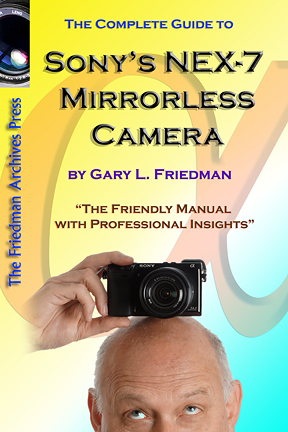The final release of Adobe Camera Raw 6.2, DNG Converter 6.2 and Lightroom 3.2 includes raw conversion support for the Alpha 33 and 55 models as well as the NEX-5 and NEX-3, Alpha 290 and 390 which were included in the Release Candidate versions. These August 30th releases are final version, RC versions are a form of beta test.
The bad news is that anyone using the LR3.2 RC as a temporary free solution for getting full profile correction without investing in Photoshop CS5 will lose their freebie. But Lightroom is eminently affordable, and it can function as a raw conversion front-end for any earlier Photoshop or Elements version. On its own, it is a mere 10MB of program data fatter than Adobe Camera Raw as a plug-in and runs with great efficiency on modestly specified laptops (etc). It’s a lean, keenly priced solution which offers many further benefits as a DAM (Digital Asset Management) library such as keywording, copyright control, metadata editing, version stacking and multiple catalogues.
http://www.adobe.com/support/downloads/new.jsp
I am informed that support is included for the 16mm lens on NEX (profile) but I can’t tell whether it is the profile I supplied to Adobe Labs, or a new one, because my profile has remained unchanged on my system – same names, same modification date. And there’s no NEX-3 version which might be expected if they had created new profiles. So it looks as if it could be worth sending profiles into Adobe after creating them.
It’s fantastic news that Adobe has released ACR for the new Alpha 55 16 megapixel sensor before the cameras even hits the street – mine is on order, waiting! Not so great for Nikon users; no D3100 raw conversion in this release. But Canon users get the 60D (despite Adobe missing it out from their front page list). Adobe did this Sony friendly pre-release once before, for the Alpha 100, getting the conversion into place before the camera went on sale.
The bad news is that the Alpha 580 and 560 models are not in the list alongside the fixed mirror pellucid, transflective (anything but Translucent, please…) cameras.
The instruction manual for the Alpha 33 and 55:
http://esupport.sony.com/US/perl/model-documents.pl?mdl=SLT-A33®ion_id=1
is already on-line and shows a March 2010 publication date, which means that Sony has had these new cameras in existence since the beginning of the year, certainly well before PMA when mockups were shown. It’s likely that Adobe’s Thomas Knoll has been using one from the first bug-free pre-production model onwards!
Now all we need is the revised lens series with SAM or SSM motors fitted into the 16-80mm CZ, 16-105mm Sony, 18-200mm and 18-250mm Sony; the 11-18mm wideangle replacement, the 75-300mm SAL replacement, and a few other goodies. Hopefully all Zeiss glass gets SSM where possible. That 16-80mm CZ is four years old now as a design. A tweak to the maximum aperture, or the zoom range, would revive interest.
– David Kilpatrick






